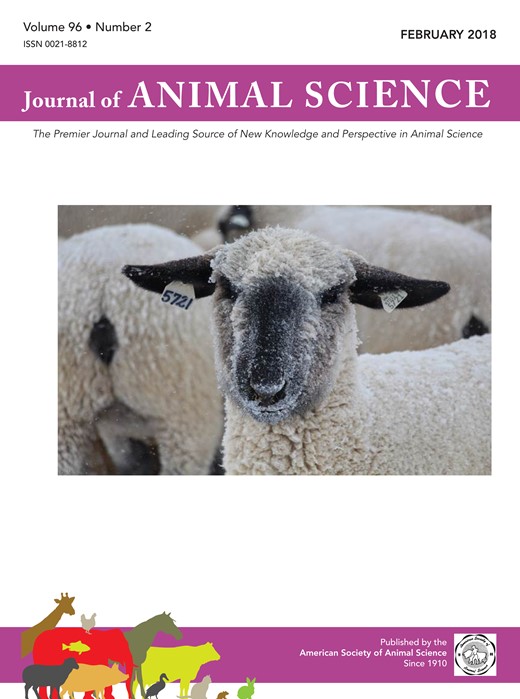-
Views
-
Cite
Cite
D M D L Navarro, E M A M Bruininx, L de Jong, H H Stein, Analysis for low-molecular-weight carbohydrates is needed to account for all energy-contributing nutrients in some feed ingredients, but physical characteristics do not predict in vitro digestibility of dry matter, Journal of Animal Science, Volume 96, Issue 2, February 2018, Pages 532–544, https://doi.org/10.1093/jas/sky010
Close - Share Icon Share
Abstract
An experiment was conducted to quantify nutrient and fiber fractions of feed ingredients and to determine in vitro apparent ileal digestibility (IVAID) and in vitro apparent total tract digestibility (IVATTD) of DM and OM in each ingredient. Ten ingredients that vary in fiber concentration and composition were used: corn, wheat, soybean meal (SBM), canola meal, distillers dried grains with solubles (DDGS), corn germ meal, copra expellers, sugar beet pulp (SBP), synthetic cellulose (SF), and pectin. Correlations between chemical and physical characteristics of ingredients and IVAID and IVATTD of DM and OM were determined. The physical characteristics measured included bulk density, water-binding capacity (WBC), swelling, and viscosity. The analyzed GE was compared with values for GE calculated from all energy-contributing components. Results indicated that the analyzed chemical composition of most ingredients added to 100% or greater, except for DDGS, SBP, and SF, where nutrients added to only 94.29%, 88.90%, and 96.09%, respectively. The difference between the sum of the calculated GE of the analyzed components and the analyzed GE of the ingredients ranged from −2.25 MJ/kg in DDGS to 1.74 MJ/kg in pectin. No correlation was observed between swelling, WBC, or viscosity and IVAID or IVATTD of DM or OM. The concentration of insoluble dietary fiber (IDF) and total dietary fiber (TDF) was negatively correlated (P < 0.05) with IVAID and IVATTD of DM and OM. There was a tendency for NDF (r = −0.60) and ADF (r = −0.61) to be negatively correlated (P < 0.10) with IVAID of DM. However, no correlation was observed between the concentration of CP, GE, acid-hydrolyzed ether extract, lignin, or soluble dietary fiber and IVAID and IVATTD of DM and OM. The stronger correlations between IDF, TDF, and insoluble non-starch polysaccharides and IVAID and IVATTD of DM and OM than between ADF and NDF and IVAID and IVATTD of DM and OM indicate that the concentration of TDF in feed ingredients is a better predictor of the digestibility of DM and OM than values for NDF and ADF. In conclusion, the calculated GE of some feed ingredients was in agreement with the analyzed GE, which gives confidence that energy-contributing components were accounted for, but for DDGS and SBP, it was not possible to account for all analyzed GE. Concentrations of IDF and TDF, but not the physical characteristics of feed ingredients, may be used to estimate IVAID and IVATTD of DM and OM in feed ingredients.





